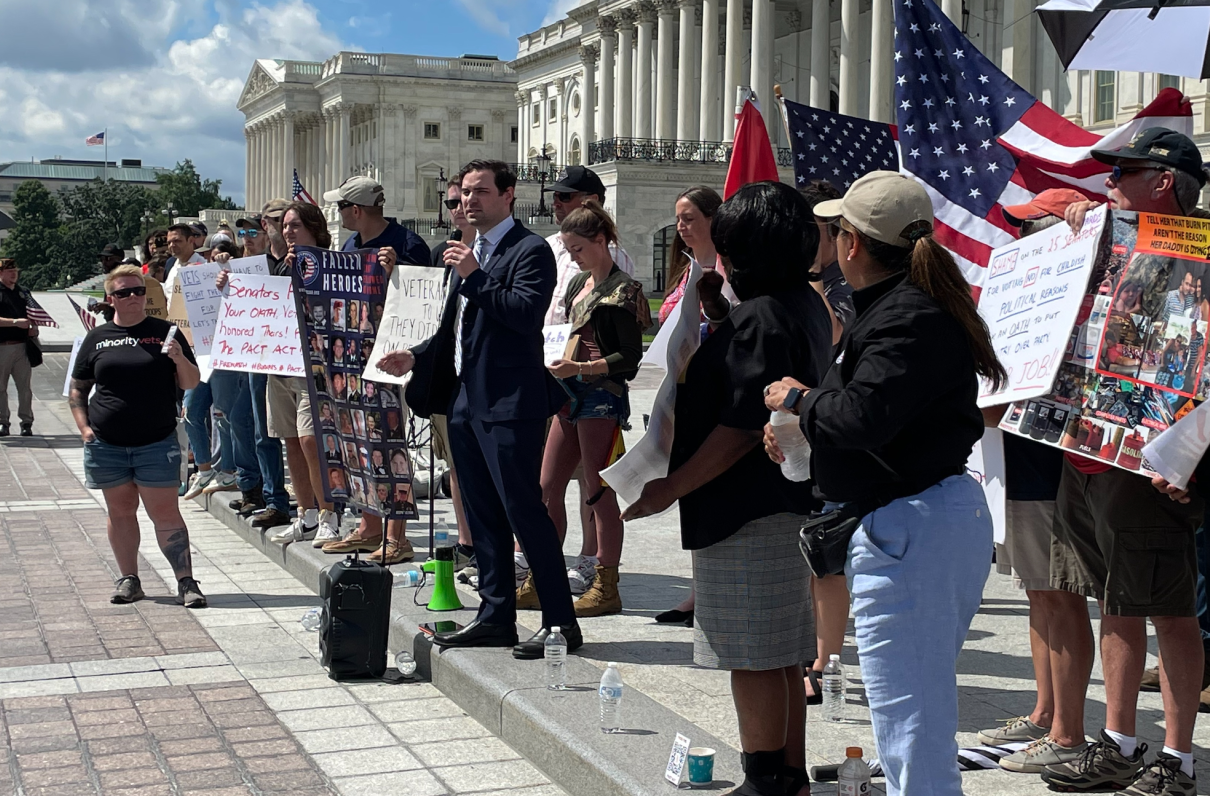By MOAA Staff
The passage of the Sergeant First Class Heath Robinson Honoring Our Promise to Address Comprehensive Toxics (PACT) Act left many MOAA members with questions. Here’s our attempt to provide answers. Have more you’d like to know? Email legis@moaa.org with “PACT Act” in the subject line; we’ll update this document with more information.
Q. What will the Sergeant First Class Heath Robinson Honoring our Promise to Address Comprehensive Toxics (PACT) Act do?
A. Among other improvements, the wide-ranging bill would:
- Make more than 3.5 million veterans eligible for VA health care.
- Add nearly two dozen conditions to a list of ailments presumed connected to toxic exposure by the VA.
- Overhaul VA’s presumption process, allowing veterans an easier path to their earned benefits than those in previous generations.
- Expand VA research into burn pit-related illnesses, including cancer rates among those who served in Southwest Asia during the Gulf War.
- Improve VA’s screening process for toxic exposure-related illnesses, and improve training for VA employees to recognize such illnesses.
- Require the construction of 31 new VA facilities.
- Include veterans who served in Thailand, Laos, and other regions during (and in some cases, after) the Vietnam War among those presumed to be exposed to defoliants such as Agent Orange.
- Create and expand programs designed to recruit and retain qualified VA personnel, with a focus on supporting rural areas.
Q. How did the bill take shape?
A. The legislation combines a series of bills targeting toxic exposure reform. The bipartisan effort, supported by MOAA and dozens of other veterans advocacy groups, came about through bipartisan negotiations, chiefly among members of the House and Senate Committees on Veterans’ Affairs.
Q. How did the bill pass Congress?
A. Even before the most recent headlines, the PACT Act’s path to passage wasn’t a clear one. Here’s a rough timeline:
- June 2021: H.R. 3967 introduced in the House.
- February 2022: H.R. 3967 passed by the House Committee on Veterans’ Affairs (14-11).
- March 2022: H.R. 3967 passed by the House (256-174).
- June 2022: An amended version of H.R. 3967 passes the Senate 84-14. However, this version includes a tax-related item related to compensation for some health care providers, triggering a “blue slip” provision and leading to a restart of the legislative process.
- July 2022: The text of H.R. 3967, with a correction to fix the blue slip provision and no other substantive changes, is added as an amendment to S. 3373, which passes the House on July 13 (342-88).
- July 27, 2022: A procedural vote on S. 3733 required to end debate before an up-and-down vote by the chamber on the measure fails to reach the 60-vote requirement (55-42).
- Aug. 2, 2022: The bill passes the Senate (86-11).
- Aug. 10, 2022: The bill is signed into law.
Q. What changed in the bill since the June 16 vote?
A. One sentence was removed, nothing was added.
Q. How much will the bill cost?
A. The new costs come to about $278 billion over 10 years. A Congressional Budget Office estimate puts the bill’s cost at $667 billion over 10 years, but less than half of that is new spending – about $390 billion comes from reclassifying current-law discretionary spending as direct, or mandatory, spending. The reclassification triggers a score even though there is no additional money being spent.
Q. Is this $390 billion reclassification the source of the $400 billion figure being discussed by some senators and media outlets?
A. Yes.
Q. Can that $390 billion be used for anything other than veterans’ care?
A. No. The “Cost of War Toxic Exposure Fund,” which was part of the bill when passed 84-14 by the Senate in May, can only be used to cover costs related to caring for toxic-exposed veterans.
Q. Does the bill authorize $400 billion, or any other amount, of funds to be spent on non-veteran-related programs?
A. No.
Q. Does the bill include any amendments providing funding for non-veteran-related programs?
A. No.
Q. Where can I read the full text of the bill?
A. The bill text is available at Congress.gov.
Q. Was the $390 billion reclassification added after the 84-14 vote in the Senate in June?
A. No. The only changes to the legislation after that vote addressed the blue slip fix outlined above.
Q. Could the reclassification of $390 billion to mandatory spending increase the amount of money available to Congress for discretionary spending in future budgets on non-veteran-related programs?
A. Congress sets the amount of the discretionary budget each year through appropriation acts. This happens regardless of how the funds in the Honoring Our PACT Act are classified. Every single year this will be decided by the appropriations process. No amendments to the PACT Act were proposed that would eliminate the need for the Senate to review appropriations annually.
More Members Mean More Influence Over Our Health Care
Get involved and make sure your interests are addressed. Because the larger our voice is, the greater our impact will be.
